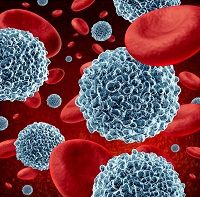This Is How HIV Enters the Nucleus of Immune System Cells
“Loyola University Chicago scientists have solved a mystery that has long baffled HIV researchers,†a statement from the school announced.

“Loyola University Chicago scientists have solved a mystery that has long baffled HIV researchers,” a statement from the school announced.
It’s been a mystery how the human immunodeficiency virus (HIV) is able to infect the nucleus of immune system cells — but new research has changed that.
Once the virus gets inside of immune system cells, it eventually kills them — including T cells and macrophages. This is why patients with HIV have a weakened immune system and are susceptible to other infections. However, HIV has to find a way to get to the nucleus, which houses the cell’s DNA, once it has made its way inside the cells. Other viruses do this by attacking while a cell divides, but HIV has the ability to do so gradually without waiting for the cell to divide.
- Related: Early HIV Infection Commonly Yields Neurologic Problems
The question that has remained, however, is how the virus is able to get through the intact nuclear membrane (also referred to as the nuclear envelope). It’s understood that part of the reason is because the protein shell that protects the HIV genome is 50% larger than the pores in the nuclear envelope — which regulate the materials that go back and forth between the nucleus and other parts of the cell.
Corresponding author Edward M. Campbell, PhD, and colleagues discovered that the motor protein, KIF5B, plays an intricate role in the process. While KIF5B typically transports cargoes away from the nucleus, HIV overtakes the protein and causes it to tear off pieces of the nuclear envelope — which ae proteins called Nup358. The pores then become big enough for the virus to pass through, as described in PLOS Pathogen.
Therefore, researchers now know that it could be worthwhile to develop a drug which stops the virus from hijacking KIF5B. This means that the immune system would have more time destroy the virus.
“It’s like making a bank vault harder to break into. In addition to making the money more secure, it would increase the chance of sounding the alarm and catching the burglars,” concluded Campbell, an associate professor in the Department of Microbiology and Immunology.
Also on MD Magazine >>> Another Reason That People with HIV Need to Start ART Immediately